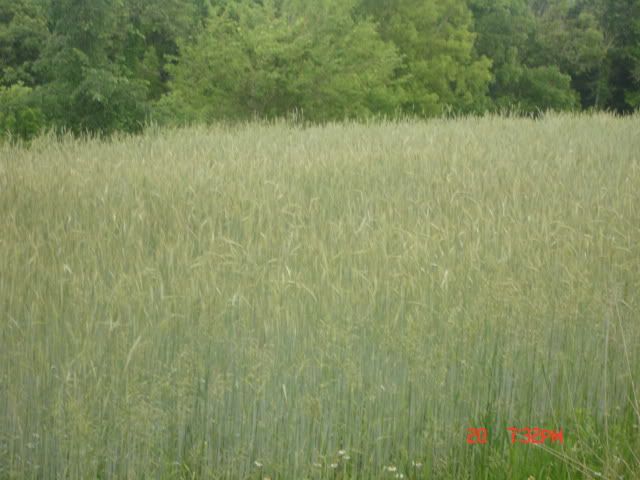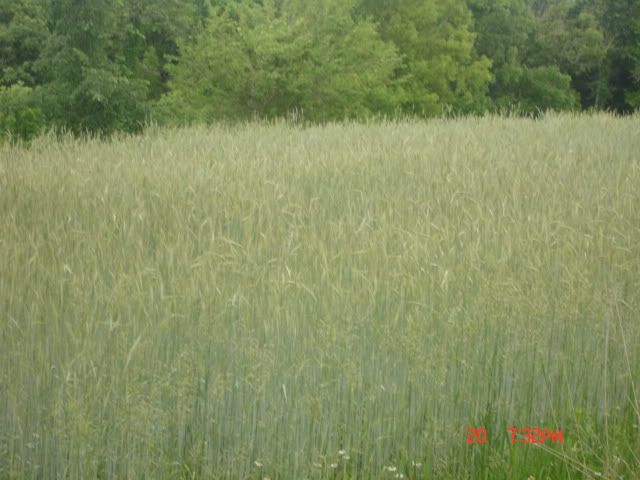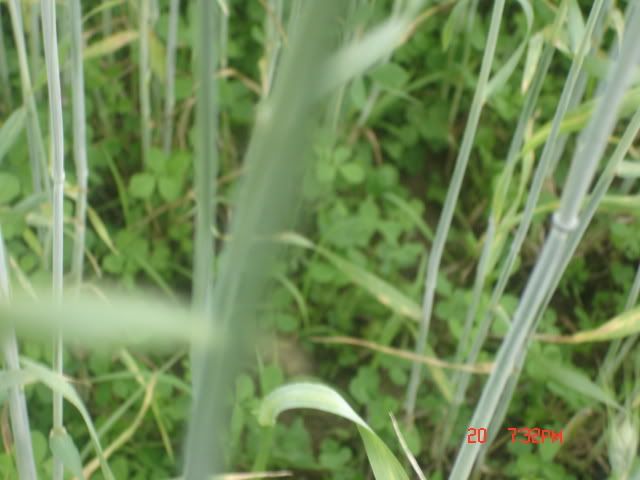

You are using an out of date browser. It may not display this or other websites correctly.
You should upgrade or use an alternative browser.
You should upgrade or use an alternative browser.
Fertilize or Not?
Am just tilling up some old brome stands. Am putting in the wheat, oats, rye, AWP, red clover mix on 80% of the area (Sept. 1ish) and canola with PT turnips on other 20% of area (Aug. 1ish).
Do you recommend fertilizing? PH was fine.
It is a plenty large area (4 plots, 10 acres total).
Was talking to buddy in Minnesota that said the deer didn't like his green plots that weren't fertilized.
What has been your experiences?
I was planning on just fertizing the areas within bow range of my stand sites and leaving the rest unfertilized.
As always...............thanks!!!!
Am just tilling up some old brome stands. Am putting in the wheat, oats, rye, AWP, red clover mix on 80% of the area (Sept. 1ish) and canola with PT turnips on other 20% of area (Aug. 1ish).
Do you recommend fertilizing? PH was fine.
It is a plenty large area (4 plots, 10 acres total).
Was talking to buddy in Minnesota that said the deer didn't like his green plots that weren't fertilized.
What has been your experiences?
I was planning on just fertizing the areas within bow range of my stand sites and leaving the rest unfertilized.
As always...............thanks!!!!
dbltree
Super Moderator
Fertilizer is optional and usually not needed for cereal grains but they do love nitrogen if you want to "sweeten" a few spots.
Using to much N is like fertilizing your lawn...it will grow like mad!
Rapid growth can leave it to tall and unpalatable by the middle of hunting season so use caution before you get carried away.
You can always add some later just before a rain if you feel it's needed...
Using to much N is like fertilizing your lawn...it will grow like mad!
Rapid growth can leave it to tall and unpalatable by the middle of hunting season so use caution before you get carried away.
You can always add some later just before a rain if you feel it's needed...
dbltree
Super Moderator
Dbltree......What would you use for fertiziler and how much would you use if a guy wanted to "sweeten" up a spot?
Thanks!!!!!!!!!!
A 100#'s of urea (46-0-0) would be enough to "juice" up your grains....:way:
dbltree
Super Moderator
Paul,
We were going to try some BFO this year, but i read that they need to be at least 2in deep. Can i broadcast them and then disc them under?
I assume you are referring to oats?
If so you may want to back up and take a look at my tests done last fall and winter. In side by side tests on both farms, deer absoutely refused to touch the BFO oats but instead devoured the inexpensive Jerry oats.
When it comes to oats, save your money and buy common spring oats...
Any cereal grains can be broadcasted, lightly tilled or disced in 1-2" deep and then cultipacked to firm soil.
Often people ask me why cereal rye?? Why not wheat? Why not oats?
Rye is just plain a gift from God as far as I'm concerned! :way:
Cereal rye (fall rye grain, winter rye) is higher in protien then wheat and unlike any oats (even BFO) it will last ALL winter!
Besides the important attributes that we look for in attracting deer it is also one of the only plants capable of recycling nitrogen...
That's right...recycle nitrogen!!
When we till under red clover in the fall and plant rye, the rye absorbs the nitrogen but then can re-release it in the spring and adding more red clover and peas to our rye planting just keeps the process going!
Cereal Rye
A rye cover crop and manure applications are mutually beneficial. Manure nutrients aid in decomposition of the rye, offsetting any potential yield drag, and rye captures and recycles the manure nutrients effectively to the future corn crop, reducing commercial fertilizer needs.
Rye is one of the best scavengers of nitrogen and reduces leaching losses on both sandy soils and tile-drained land. The fast growing, fibrous root system can capture 25 to 100 pounds of soil nitrogen per acre.
Seeding rye in late summer or early fall will allow it to scavenge nitrogen. When organic N (from manure or legumes) is still available. Rye can capture this nitrogen and recycle it to the following season.
The actual amount of nitrogen that is recycled is highly variable. A presidedress soil nitrate test can help determine the amount of nitrogen credit to take for the upcoming corn crop.
Rye should be allowed to grow over the winter to continue taking up N in the spring.
Rye is the hardiest of cereals and can be seeded later in the fall than other cover crops, and it provides top growth and extensive root growth. It will germinate at cold temperatures—as low as 34 degrees F—and it will resume growing at 38 degrees in the spring. This makes it possible to seed rye after corn, sugar beet or bean harvest until the ground freezes.
It is relatively inexpensive to plant, and the seed is readily available or easily grown.
Easy to establish, rye can be aerial seeded in standing corn/silage and before leaf drop in soybean. Rye can be broadcast alone or with dry fertilizers, can be added to manure tanks for slurry seeding or drilled (which provides the most consistent stands).
It outperforms most other crops on infertile, sandy or acidic soil. It is also tolerant of a variety of soil types and grows well on both poorly and well-drained soils.
Rye can recycle potassium from deeper in the soil profile for future crop use.
Rye is effective at suppressing weeds. It competes with winter annuals and inhibits growth of spring weeds. As rye residue decomposes, it releases allelopathic compounds that are harmful to the growth of weeds.
The rapid fall and spring growth can stabilize sandy soil, trap snow and improve infiltration.
Rye is utilized for many cropping systems, including fruits and vegetables, where it can be left in narrow strips to reduce wind erosion.
Rye, and all cover crops, build soil quality over time by adding organic matter. Long-term benefits include improved soil structure, tilth, water infiltration and water-holding capacity
A rye/pea/red clover combination then makes a perfect combination to plant ahead of corn, sugarbeets, milo or summer brassicas.
Cereal rye is a s close to a perfect plant for food plotters as you can get, requiring no fertilizer or lime, capable of growing on dry sandy soils or heavy clay.
Forget wheat...it just cost you money at every turn and has less food value for your deer herd!
Last edited:
HannibalBowhunter
New Member
I was thinking about overseeding my soybeans with rye and turnips. Anyone have any experience with this? Would it be better to do them together or separate plots? Seeding rates? Best time frame? Thanks in advance!
SEIowaDeerslayer
Well-Known Member
What are the consequences of planting field rye too early? I was hoping to get a rye, oat, and field pea mix in the same time I do my brassicas, which is usually the last weekend of July. If planted the last week of July, will rye become rank and unpalatable?
dbltree
Super Moderator
I was thinking about overseeding my soybeans with rye and turnips. Anyone have any experience with this? Would it be better to do them together or separate plots? Seeding rates? Best time frame? Thanks in advance!
Both rye and brassices work well overseeded into standing soybeans provided it's done just a few weeks before leaf drop. This is why I prefer early maturing soybeans for this purpose.
Brassicas won't have time to put on much growth is over seeded in late Auguts or early September so they can be seeded together.
Rye can be broadcast at up to 150#'s per acre but if mixing brassicas with it I would go on the light side at 2-4#'s or more if alone.
Attempt to overseed just ahead of a good rain to help inside germination.
Yes...both rye and oats will become very stemmy and mature by October and deer will not be interested unless it's the only food around for miles!
Now they certainly will eat the peas almost anytime but if you want tender succulant grazing that will attract them all fall, plant brassicas in late July and cereal grains around the Sept. 1st time frame.
Both rye and brassices work well overseeded into standing soybeans provided it's done just a few weeks before leaf drop. This is why I prefer early maturing soybeans for this purpose.
Brassicas won't have time to put on much growth is over seeded in late Auguts or early September so they can be seeded together.
Rye can be broadcast at up to 150#'s per acre but if mixing brassicas with it I would go on the light side at 2-4#'s or more if alone.
Attempt to overseed just ahead of a good rain to help inside germination.
What are the consequences of planting field rye too early? I was hoping to get a rye, oat, and field pea mix in the same time I do my brassicas, which is usually the last weekend of July. If planted the last week of July, will rye become rank and unpalatable?
Yes...both rye and oats will become very stemmy and mature by October and deer will not be interested unless it's the only food around for miles!
Now they certainly will eat the peas almost anytime but if you want tender succulant grazing that will attract them all fall, plant brassicas in late July and cereal grains around the Sept. 1st time frame.
dbltree
Super Moderator
I went to mow some oats and berseem to prepare to plant brassicas...Holy Cats...should've just hired a combine isntead!! 
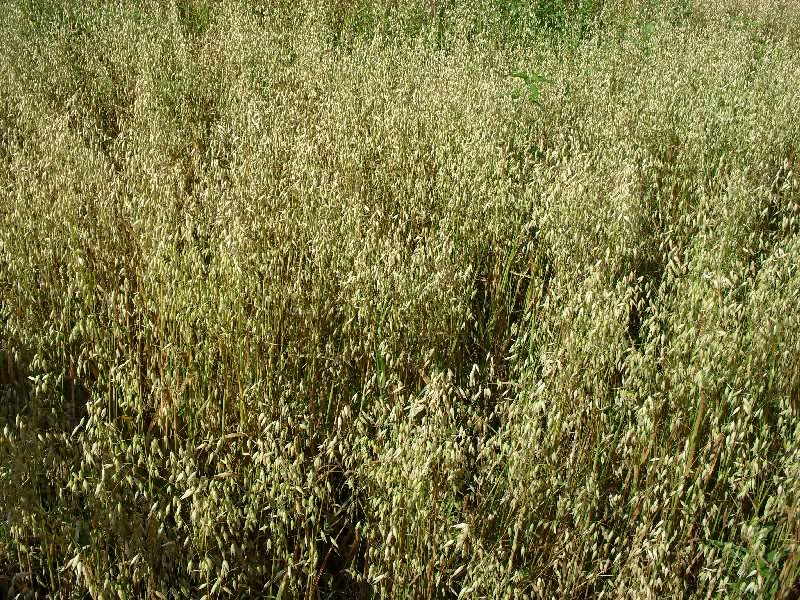
Doggone things sure were pretty!
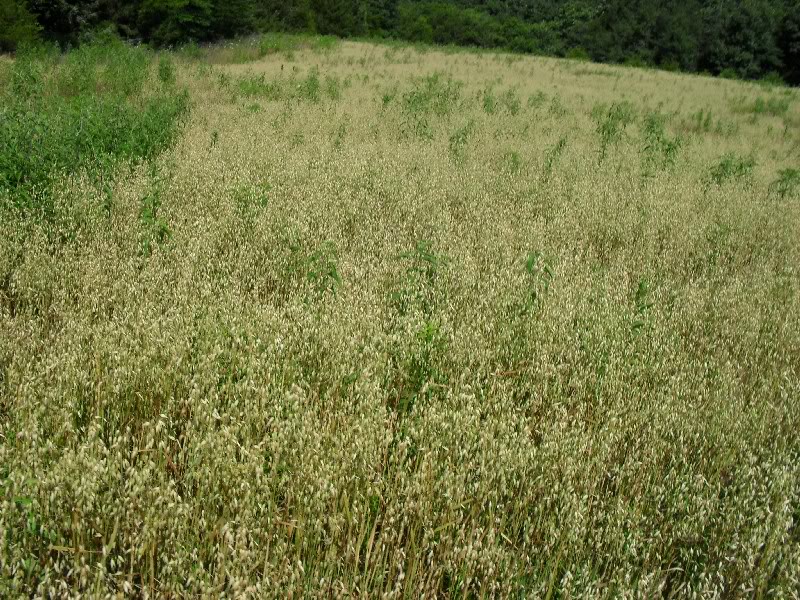
Berseem was doing pretty well but not as good as if I would have clipped the oats earlier
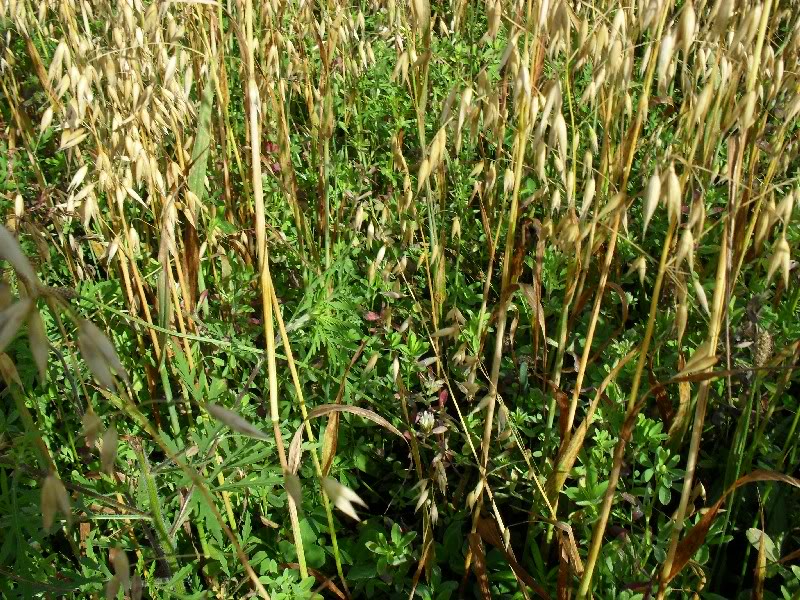
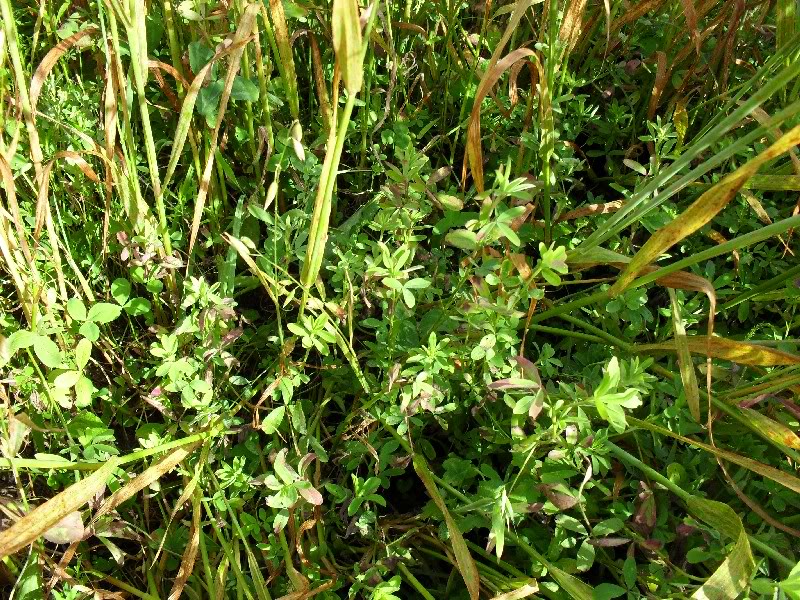
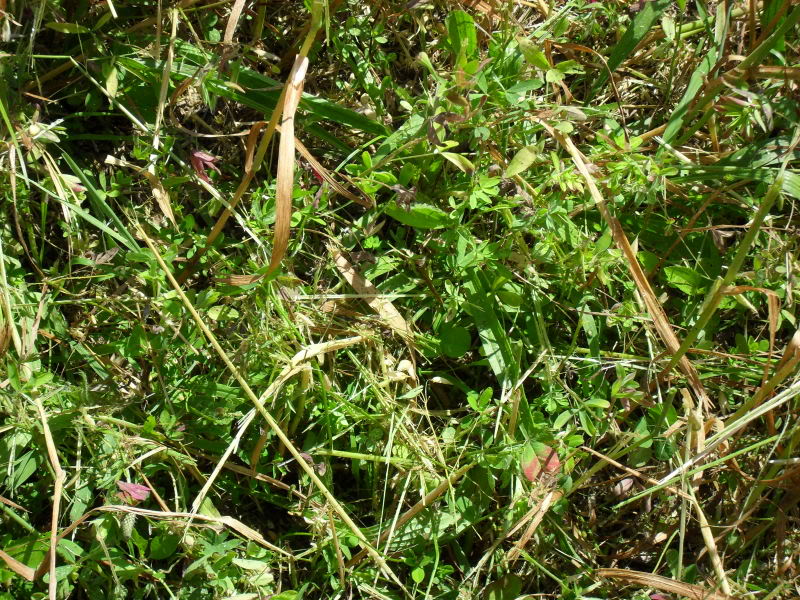
The place was full of deer beds

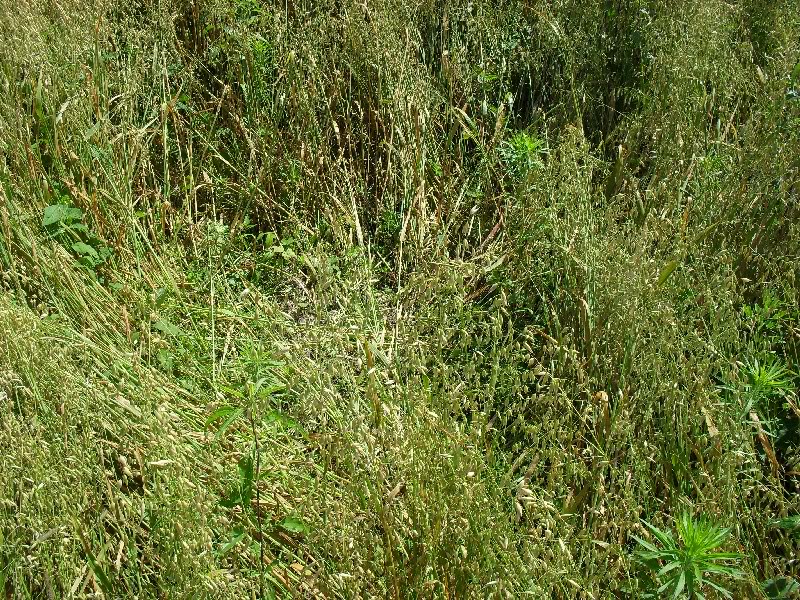
and it's hard to see in this pic but most had little fawn beds a few fet from the larger beds
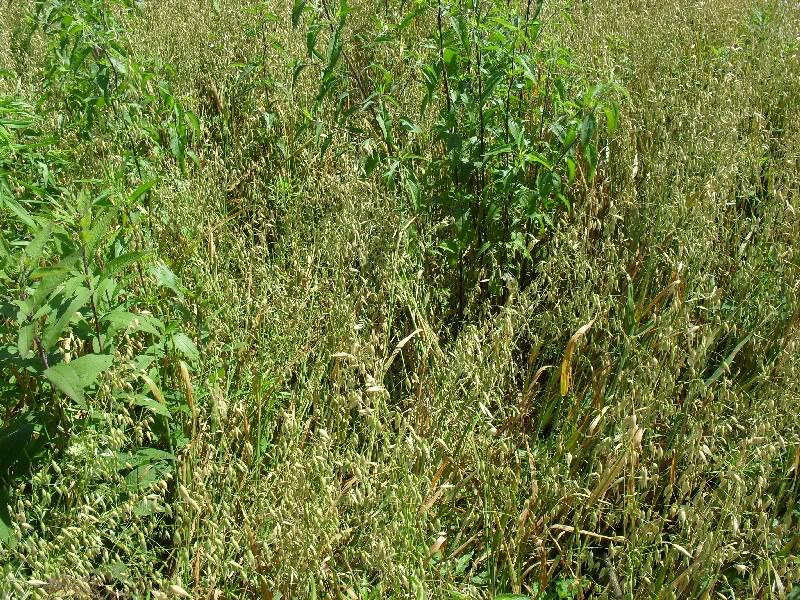
I had one bag of just common oats and all the rest were Jerry oats and really didn't expect much difference but it was really quite huge! The odd bag planted area was full of weeds and you can see in this pic the strip not mowed yet to the left of the jerry oats which appear brighter and lighter in color and have few weeds.
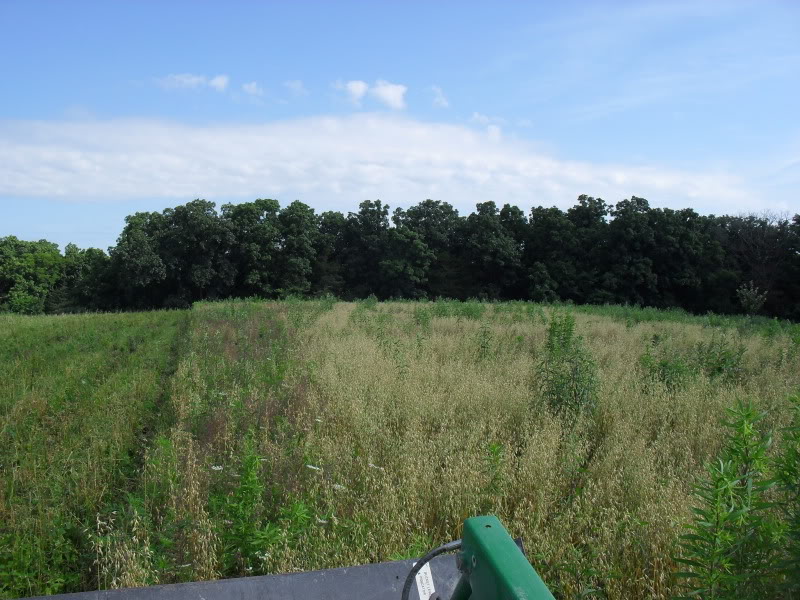
Oats can provide several tons of dry matter that can be tilled back into the soil and the straw helps loosen and aerate the soil
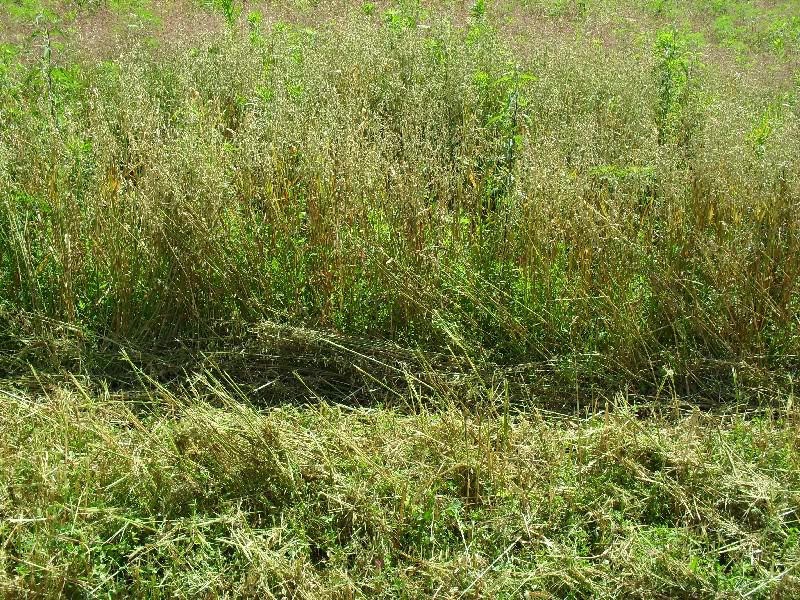
I would prefer to use a heavy disc or a plow to till it all under as is but I need to use my tiller only on this patch and they are just to heavy to till under without chopping them up first.

Part of this planting was a nurse crop for white clover and you can just the clovers peeking thru the chopped straw

A portion of this planting will be planted in late August to a rye/oat/pea mix and I would have preferred to just leave the oats standing and make use of the "free seed" but some places weeds we're starting to pop up and I didn't want them to got to seed.
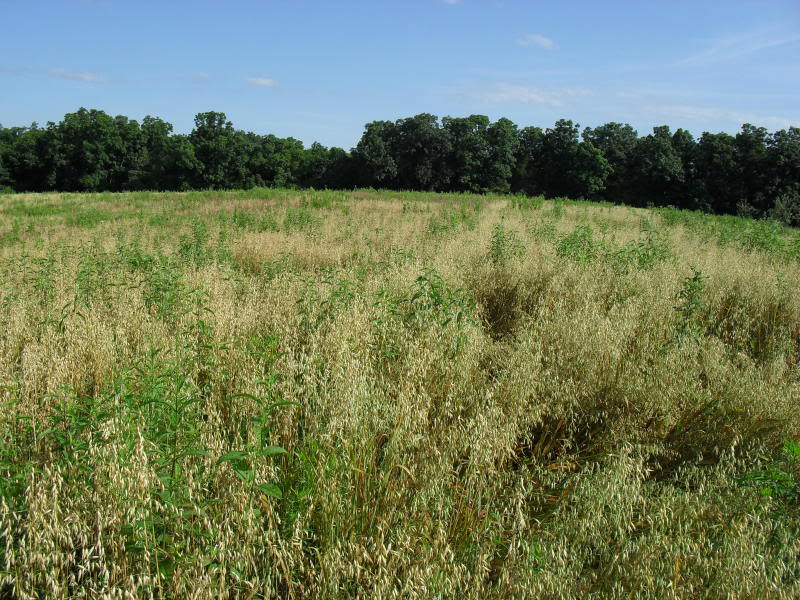
Another field was pretty clean so we'l leave that one standing and mow the oats ahead of planting. Doing so will shatter the oats onto the ground where we can add rye and peas after tilling it under.

These fields were old pastures and somewhat infertile soil suffering from years of being "used and abused" as pasture, it needs lime as soon as we can get it put on but as one can see...didn't phase the oats any!
Spring plantings of oats and berseem are a way to suffacate weeds, start fixing nitrogen and add tons of organic matter to the soil when tilled in. We use buckwheat in the same manner but no nitrogen is produced giving an edge to the berseem in this case...

Doggone things sure were pretty!

Berseem was doing pretty well but not as good as if I would have clipped the oats earlier



The place was full of deer beds


and it's hard to see in this pic but most had little fawn beds a few fet from the larger beds

I had one bag of just common oats and all the rest were Jerry oats and really didn't expect much difference but it was really quite huge! The odd bag planted area was full of weeds and you can see in this pic the strip not mowed yet to the left of the jerry oats which appear brighter and lighter in color and have few weeds.

Oats can provide several tons of dry matter that can be tilled back into the soil and the straw helps loosen and aerate the soil

I would prefer to use a heavy disc or a plow to till it all under as is but I need to use my tiller only on this patch and they are just to heavy to till under without chopping them up first.

Part of this planting was a nurse crop for white clover and you can just the clovers peeking thru the chopped straw

A portion of this planting will be planted in late August to a rye/oat/pea mix and I would have preferred to just leave the oats standing and make use of the "free seed" but some places weeds we're starting to pop up and I didn't want them to got to seed.

Another field was pretty clean so we'l leave that one standing and mow the oats ahead of planting. Doing so will shatter the oats onto the ground where we can add rye and peas after tilling it under.

These fields were old pastures and somewhat infertile soil suffering from years of being "used and abused" as pasture, it needs lime as soon as we can get it put on but as one can see...didn't phase the oats any!
Spring plantings of oats and berseem are a way to suffacate weeds, start fixing nitrogen and add tons of organic matter to the soil when tilled in. We use buckwheat in the same manner but no nitrogen is produced giving an edge to the berseem in this case...
ayr_aca_cs
New Member
looking at planting some oats and clover in the bare spots of my white clover plot, what would be the best time to plant this? and should i put fert down along with the seed?
dbltree
Super Moderator
looking at planting some oats and clover in the bare spots of my white clover plot, what would be the best time to plant this? and should i put fert down along with the seed?
You can plant that combination anytime now but if you would like the oats to be attractive during the early hunting season, wait til the end of August.
It wouldn't hurt to at some low N fertilizer suchh as 6-24-24 or 8-36-36 or some such before planting.
HannibalBowhunter
New Member
I had a question about cereal grain combos. If I planted cereal rye and white clover this fall(overseeded into standing soybeans), would that establish a nice clover plot for the next few years? Any disadvantages to this combo. I have limited use of equipment, so I was thinking of a way to get a perennial plot established quickly. Wonderful threads on here. Thanks in advance!
dbltree
Super Moderator
I had a question about cereal grain combos. If I planted cereal rye and white clover this fall(overseeded into standing soybeans), would that establish a nice clover plot for the next few years? Any disadvantages to this combo. I have limited use of equipment, so I was thinking of a way to get a perennial plot established quickly. Wonderful threads on here. Thanks in advance!
You will end up with pure white clover because the winter rye is of course and annual like wheat. White clover is easy to manage with a few summer clippings but has the disavantage of not being attractive once cold weather hits hard.
This is why I prefer to have plots divided into sections that include clover, brassicas and fall grains, each in seperate strips. Some folks don't have equipment or time to plant annuals every year and in those cases white clover may be the best option.
I would over seed the rye into the standing soybeans and sometimes you can do the same with clover if we get heavy rains so it's worth a try. You may want to also frost seed some additional clover seed into that stand this winter in Feb/March to insure a viable stand.
Clip the rye off next spring and you should be good to go...:way:
HannibalBowhunter
New Member
I have another question. I am planning to overseed rye into standing soybeans this September. Do you think that this will be enough of an attractant for a November food source? I have noticed that you plant combos with your rye (oats, AWP, etc). I don't really know if I have other options. Thanks.
dbltree
Super Moderator
I have another question. I am planning to overseed rye into standing soybeans this September. Do you think that this will be enough of an attractant for a November food source? I have noticed that you plant combos with your rye (oats, AWP, etc). I don't really know if I have other options. Thanks.
if your going to have a combination of standing soybeans and winter rye...gosh i think you oughta be set!
The combo I plant is a stand alone tilled/planted plot but certainly not gonna beat standing soybeans. I just have to many deer to grow soys, they murder before the end of summer let alone last till hunting season.
You should be good to go but let us know how you like that combo and take some pics this fall to share with us as well...:way:
HannibalBowhunter
New Member
Actually my soybeans will probably be harvested in late October. That was why I had concern about a November food source. Sorry for the confusion. Thanks.
